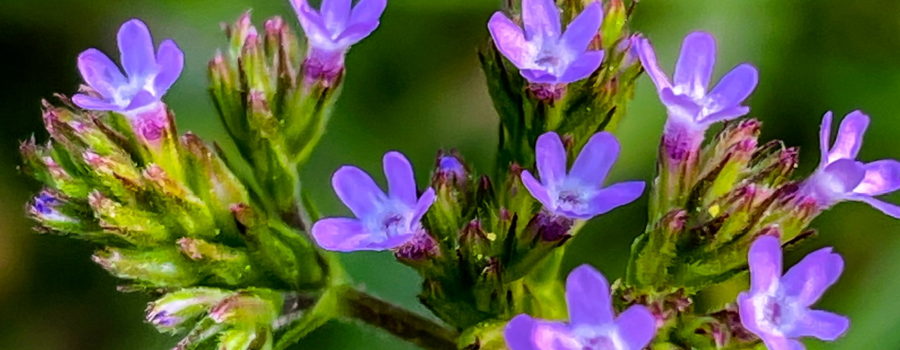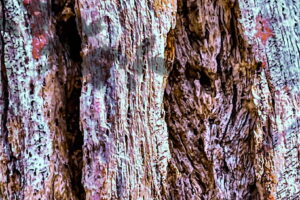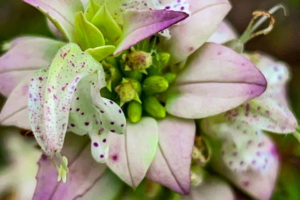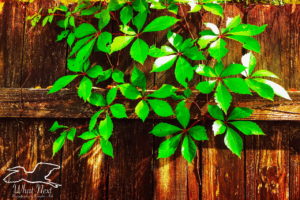Brazilian Vervain is a Great Wildlife Attractor

It’s that time of the year when even in Florida, most of our wildflowers are dormant, much of the grass is brown, and the fall color that we do get is pretty much gone. We’ve had two light frosts that have contributed to this change, but no heavy frosts yet. But there is one hearty plant that’s still producing it’s pretty little blue flowers. They aren’t nearly as plentiful as they were earlier in the fall, but they still put out a few flowers every day, and they will until we have a heavier frost. That plant is Brazilian vervain (Verbena brasiliensis), also known as Brazilian verbena or blue vervain. It’s native to Brazil and much of South America, but because of it’s popularity as an ornamental plant, it has become either naturalized or an invasive weed (depending on the source) in the southeastern United States, California, Oregon, and Hawaii and many other parts of the world.

This plant is quite hearty and spreads easily, so it may out compete some native plants. It tends to grow in moist but well drained sandy or disturbed soil. It’s commonly found along roadsides, in farm fields and pastures, in grasslands, prairies, and along river beds. It’s also pretty common in urban areas like playgrounds and parks. It prefers areas with plenty of direct sunlight, but will grow in partial shade. In partial shade it doesn’t bloom well, however. Around here, I mostly find it on the roadsides or in the disturbed areas around our office. I also occasionally come across it in clearings in the woods. Interestingly, I haven’t seen it on my property, but I won’t be surprised if it does spread here at some point. It’s closely related to some of the other vervains that grow around here such as Tampa verbena.

Even though Brazilian vervain is often considered invasive and is actually banned for use in the US Forest Service, it does have some uses beyond just being a pretty ornamental plant. It is very much loved by many of the pollinators including bees, wasps, butterflies, bats, and hummingbirds. It has a nice citrus floral scent that attracts them and even though the flowers are small, they tend to be rich in nectar. The plant’s themselves are also a small part of the diet of larger herbivores like deer and rabbits, as well as terrestrial birds such as wild turkeys and quail. The seeds provide winter food for many birds including year long residents and migrants. People can even eat this particular plant. Some folks use the flowers as an edible garnish in salads, while raw or cooked leaves are used for salads, stews, and soups. Leaves are also often made into medicinal teas used to treat headaches, depression, diarrhea, and congestion. The seeds can also be ground into a flour, but they are reported to be on the bitter side.

Although I wouldn’t recommend planting this flower as an ornamental due to it’s ability to spread into unwanted areas, I also don’t believe in removing it from areas where it already exists. The wildlife definitely benefits from it being here and it is an attractive ground cover in disturbed areas. Like so many other things in this life, this pretty, perennial plant has both pros and cons in this area.
If you enjoyed these photos and/or the information presented here, please consider becoming a subscriber. Be the first to get new episodes delivered directly to you.





Recent Comments